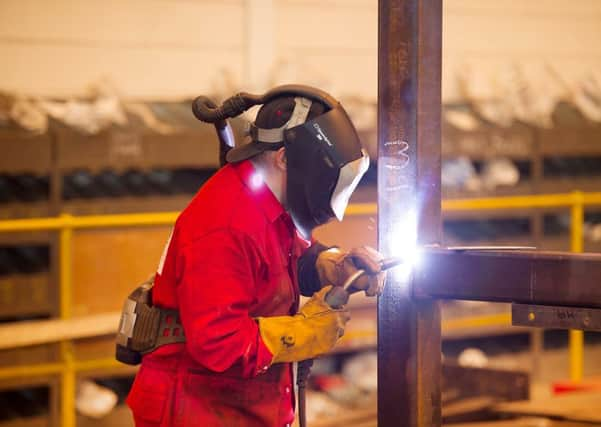UK factory output hits highest level in three years
This article contains affiliate links. We may earn a small commission on items purchased through this article, but that does not affect our editorial judgement.


The closely watched Markit/Cips manufacturing purchasing managers’ index (PMI) leapt higher in April as new orders were boosted by strong domestic and overseas demand.
The report’s main measure of output activity leapt to 57.3 last month, up from a four-month low of 54.2 in March and above economists’ expectations of 54. Any reading above 50 denotes growth.
Advertisement
Hide AdAdvertisement
Hide Ad• READ MORE: UK economy slowdown worse than feared as sales fall
Business confidence among British manufacturers was robust, with UK markets driving the strongest inflows of new work since January 2014.
The industry was also enjoying an exports boost from the Brexit-buffeted pound and the gathering strength of the global economy and the eurozone. Rob Dobson, senior economist at IHS Markit, said the UK manufacturing sector had made a “solid start” to the second quarter.
“Growth of output, new orders and employment all gathered pace, driven higher by the continued strength of the domestic market.
“There was also a solid bounce in new export business, as the weak sterling exchange rate helped manufacturers take full advantage of the recent signs of revival in the global economy, and especially the eurozone, which is enjoying its best growth spell for six years.”
Stephen Cooper, head of industrial manufacturing at KPMG UK, said: “UK manufacturing sprang back to growth in April and the latest results have beaten expectations by rising to a three year-year high at 57.3, smashing the expected 54.
“This is a real boon for UK manufacturers as the weakened pound has helped exports which is evidenced in the numbers. The PMI for the eurozone reflected a similar story, with all but one of the eight nations recording highs, showing the quickest rate of growth for six years.”
Advertisement
Hide AdAdvertisement
Hide AdThe PMI report said all sub-components of the manufacturing sector picked up in April, with Brexit-induced cost pressures remaining at large despite easing to a nine-month low.
“Although price pressures remain elevated, input cost inflation has eased significantly since hitting a record high in January,” Dobson added.
“The big question is whether this growth spurt can be maintained, especially given the backdrop of ongoing market volatility and a number of political headwinds such as elections at home and abroad.
“Other surges seen since the middle of last year have generally proved short-lived, as weak wage growth sapped consumer spending.”
• READ MORE: Cost of living fears mount as inflation hits 2.3%
It comes after the UK economy endured a worse-than-expected slowdown in the first three months of the year as the services sector slackened and inflation took its toll on retailers.
The Office for National Statistics said on Friday that gross domestic product (GDP) grew by 0.3 per cent in its initial estimate for the first quarter of 2017, down from 0.7 per cent in the fourth quarter of last year.
Economists had been expecting GDP growth to slow as consumers tightened their belts in the face of rising inflation, but they had pencilled in a higher growth figure of 0.4 per cent.